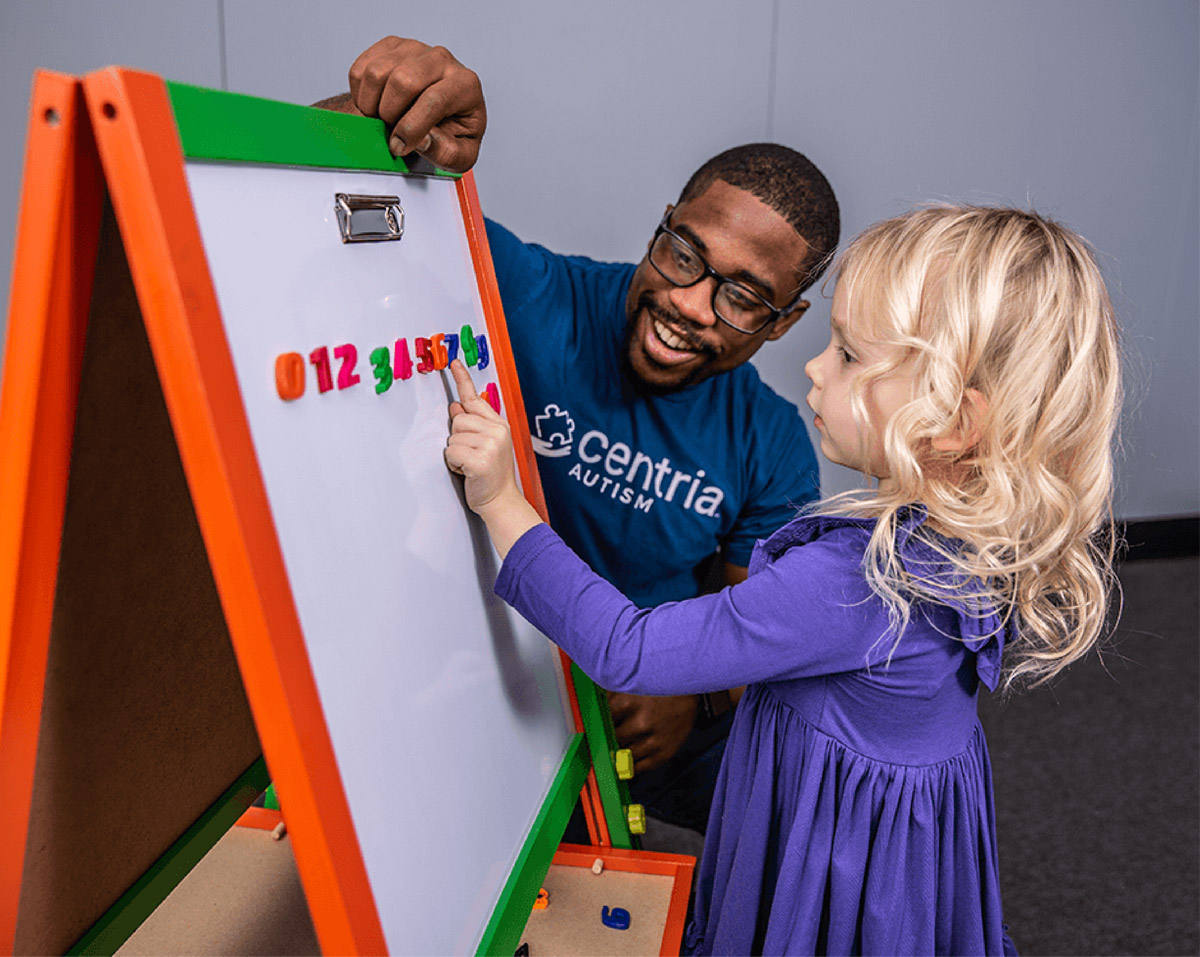At Centria, we are specifically focused on providing an assent-based care model. This approach represents a significant shift in how ABA therapy is delivered, prioritizing the comfort and willingness of each individual receiving services.
ABA as a field continues to evolve over time. Currently, there is an increase in conversations surrounding the ethics of ABA and how it prioritizes respect and the independence of the individuals receiving services. One of the most transformative shifts in the field of ABA is the emphasis on assent-based care. Assent-based care prioritizes the learner’s comfort during therapy sessions and places their performance (and response to therapy) above procedures.
This post explores what assent-based care means, how it contrasts with traditional ABA methods, and why it’s making such a profound impact on the field and the lives of those receiving services.
Understanding Assent vs. Consent
Before we dive deeper, it’s important to understand the difference between assent and consent:
Consent typically refers to a formal agreement, often requiring full understanding of what is being agreed to and legal capacity to make such decisions. For children or individuals with developmental differences, consent may legally come from parents or guardians.
Assent, however, is about showing willingness to participate in an activity. It focuses on the individual’s own preferences and comfort level, regardless of age or verbal ability. Assent can be given or withdrawn moment by moment throughout therapy sessions.
Assent-Based Care
When implementing assent-based care, you are giving the learner the opportunity to assent or show their willingness to participate in therapy, regardless of their age or verbal ability. Think of this as being able to continuously respect someone saying “yes, I’d like to do this” or “no, I do not want to do this.”
Here at Centria, we have created a framework that teaches our staff to implement ABA services that are aligned with assent-based procedures. Our staff know how to read their clients’ verbal and nonverbal cues on assent (e.g., smiling, laughing, making eye contact, engagement, active participation) and withdrawal of assent (e.g., verbal or physical protest, walking away, ignoring). Recognizing whether the client is assenting to the staff then lays the framework of how the staff should behave afterwards to support the client assenting to services.
Why Should We Practice Assent-based Procedures?
Respecting the Learner’s Autonomy
One of the most significant benefits is the shift from “compliance”-driven intervention to person-centered care. By honoring a client’s right to say “no,” we’re affirming their autonomy and dignity. There’s an emphasis built on creating an environment where the client willingly wants to cooperate versus trying to gain compliance.
Builds Trust
Trust is essential in any therapeutic relationship. When a learner knows their boundaries will be respected, they’re more likely to engage in a meaningful, collaborative way.
Reduces Trauma and Burnout
Traditional models that push for compliance can create distress or trauma, especially for non-speaking or sensory-sensitive individuals. Assent-based care promotes psychological safety, which benefits both clients and therapists.
Enhances Clinical Progress and Long-Term Outcomes
When learners are active participants rather than passive recipients, they’re more likely to retain skills and generalize them across settings. Motivation increases, and therapy becomes a shared journey rather than a one-sided demand.
Assent-Based Practices in Action: What It Looks Like
Here at Centria, we believe that our clients being happy, relaxed and engaged (HRE) is the baseline for our implementation of programming. Our therapists collect data on the clients’ specific indicators of assent, and then follow a client specific plan to rearrange the environment and change their behavior to support the client returning to an HRE state where they are assenting to our services.
This allows us to continuously assess and adjust things based on the learner’s mood, energy, or feedback. Therapists observe body language, facial expressions, and vocalizations to gauge comfort. Programs include regular discussions about consent and learner participation—even with non-verbal clients. Choice-making is embedded throughout the session—from activities to break times.
Challenges and Misconceptions
There are still some common misconceptions:
“If I let them say no, they’ll never participate.” On the contrary—when learners feel heard, they’re often more willing to re-engage. We now have the data to prove this!
“We don’t have time to check in with assent.” Assent-based procedures may seem like they require more time and effort in training initially, but it results in stronger engagement and the reduction in interfering behavior. It supports a more positive environment both for the client and staff.
Assent-based care isn’t about letting learners run the session—it’s about collaboration, mutual respect, and ethical practice.
How to Get Started
Training: Seek continuing education on assent-based practices, trauma-informed care, and neurodiversity-affirming models. Talk to your BCBA about how to implement this with your child.
Observe and Reflect: Pay attention to learner cues, what are they communicating with their words and body language. Are they assenting or withdrawing assent?
Build In Choice: Offer meaningful choices in tasks, rewards, and even the pacing of a session.
Ask for Feedback: Involve the learners themselves in goal-setting and planning.
Conclusion: A More Respectful Future for ABA
Assent-based care is more than a seasonal trend—it’s a movement toward a more ethical, compassionate, and individualized approach to therapy. As we continue to listen, learn, and evolve, we create space for clients to feel seen, safe, and empowered in their own growth.
ABA is not just about changing behavior—it’s about improving lives. And that starts with listening.
About the Author
This blog was written by Batoul Dekmak. Batoul Dekmak is a Board Certified Behavior Analyst (BCBA) licensed in multiple states, with over 10 years of experience in the field of applied behavior analysis. She currently serves as an Area Director of Clinical Services for the home market in Arizona. A graduate of Wayne State University in Detroit, Batoul has held a variety of roles across diverse settings—including in-home, center, and leadership positions—bringing a well-rounded and compassionate perspective to her work. She is deeply committed to assent-based practices and is especially passionate about mentoring others to provide care that is ethical, empowering, and person-centered. Her work is grounded in integrity, clinical excellence, and a drive to elevate the standards of care across the field.





